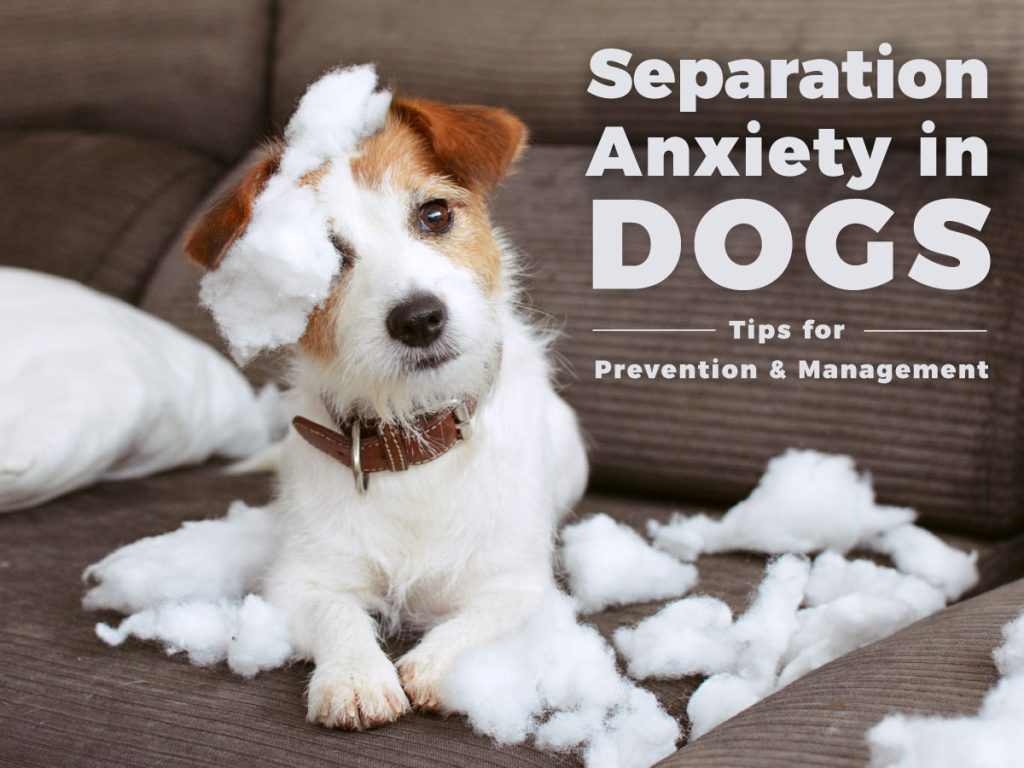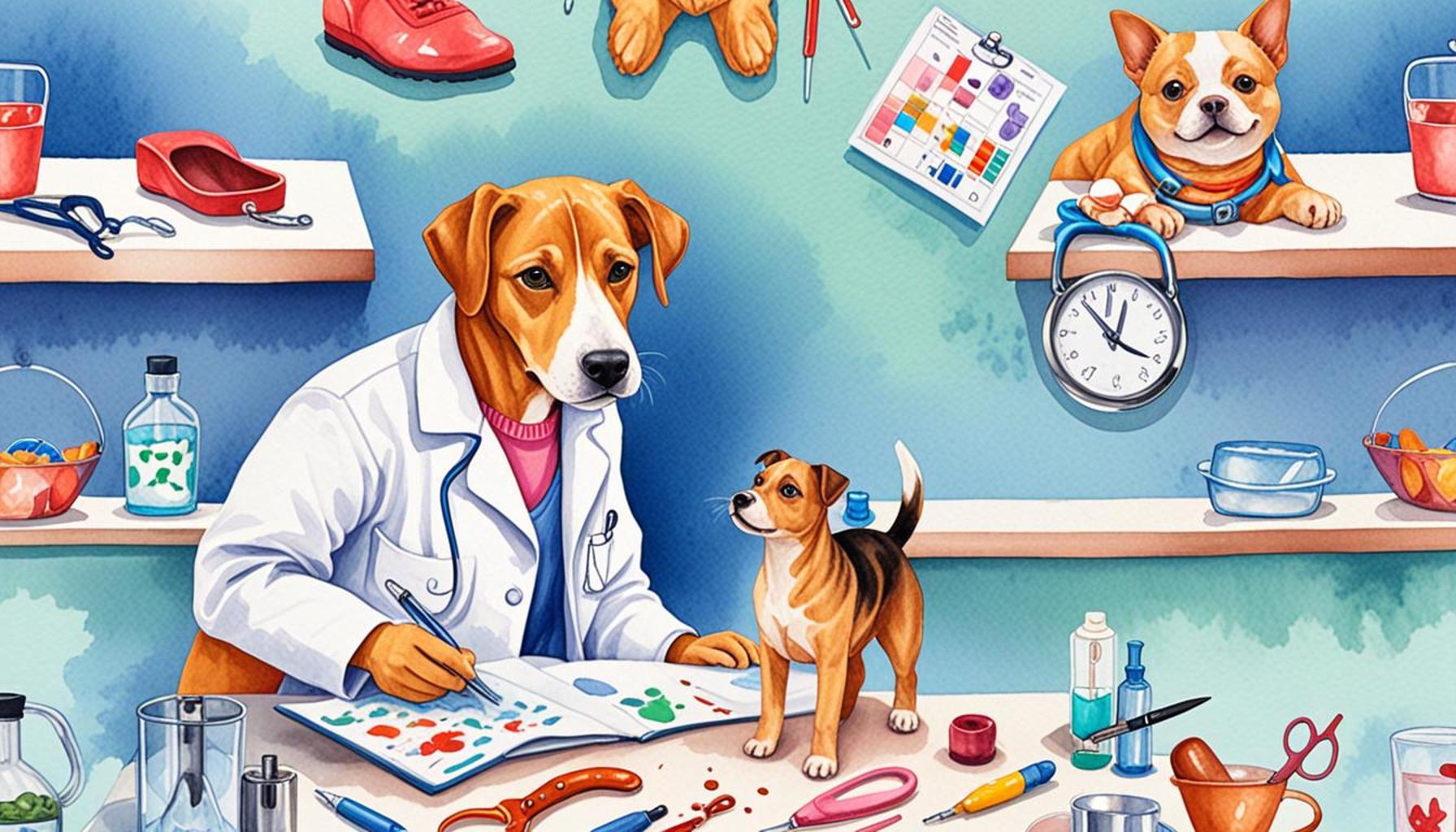Effective Strategies for Managing Pet Separation Anxiety

Separation anxiety is a common issue that many pets face, often leading to distress and behavioral challenges when they are left alone. This condition isn’t just troubling for the animal; it can also affect the owner’s peace of mind and daily routine. Understanding the underlying causes of separation anxiety in pets can help improve their well-being and strengthen the bond between pet and owner.
With increasing awareness around pet mental health, it’s crucial to explore effective strategies for alleviating these anxieties. Many pets struggle with emotional stress when separated from their owners, leading to destructive behaviors, excessive barking, and even health issues. Fortunately, there are numerous approaches to manage and reduce this anxiety.
This article will guide you through the Top 5 effective strategies designed specifically to alleviate separation anxiety in pets. Each method is based on best practices and expert recommendations, offering a comprehensive toolkit for pet owners seeking relief for their furry companions.
LEARN MORE: Click here for tips on leash training your cat
Top 5 Strategies for Dealing with Separation Anxiety in Pets
Anyone who has ever owned a pet knows they can become incredibly attached. This attachment is often a heartwarming aspect of having an animal companion, as they show unwavering loyalty and affection. However, when it comes to leaving pets alone, this bond can lead to separation anxiety, an emotional struggle that significantly affects animals. It manifests in destructive behaviors, excessive barking, and general stress—both for the pet and the owner. Fortunately, effective strategies exist to manage and alleviate these anxious feelings in pets. In this article, we will explore the top five strategies to combat separation anxiety in pets, ranked from the least to the most effective.

5. Create a Safe and Comfortable Space
One of the most fundamental steps in addressing separation anxiety in pets is ensuring they have a safe and comfortable environment when left alone. This space needs to feel as a sanctuary, providing a sense of security and comfort. Here’s how you can create such a haven:
- Provide their favorite blanket or bed to offer warmth and familiarity.
- Include toys that stimulate their interest, ensuring they are engaging and comforting.
- Use calming scents like lavender, known for its anxiety-reducing properties.
By creating a cozy corner, pets are more likely to stay calm. While establishing a safe zone is a helpful first step, it is typically more of a temporary solution for the deeper issues of separation anxiety. This is especially true for pets that require more intensive interventions.
4. Desensitization and Counterconditioning
Desensitization involves slowly acclimating your pet to being alone in a controlled manner. Begin by leaving your pet alone for short periods and gradually increase the time as they become more comfortable. This incremental approach is less shocking to your pet’s system. Alongside desensitization, counterconditioning can be employed, wherein you pair your departure with something positive for your pet, like a special treat or toy.
This strategy effectively shifts their perception from associating solitude with negative emotions to positive experiences. Though highly effective, it requires consistency, patience, and time to achieve significant results. Owners are encouraged to be observant and adjust the process according to their pet’s responses to these mini-separation experiences.
3. Interactive Toys and Puzzles
“Idle paws are the devil’s playground,” or so the adage could go when it comes to pets left alone. Keeping your pet mentally stimulated while you are away can significantly alleviate anxiety. Interactive toys and puzzles provide such mental engagement. Not only do these toys redirect their focus from your absence to something more enjoyable, they also serve an important purpose of providing mental enrichment.
Examples abound in the world of pet toys, from treat-dispensing toys—requiring manipulation to release food—to puzzles that engage their problem-solving abilities. This method ensures that even as pets are physically still, their minds are abuzz with activity, which helps reduce stress levels. It is advisable, however, to introduce these toys while you are still present to teach your pet how to interact with them properly, avoiding any initial frustration.
2. Consider Professional Training
For pets exhibiting severe symptoms of separation anxiety, professional training can be an invaluable resource. Skilled trainers come armed with techniques specifically tailored to deal with separation anxiety. Such techniques might involve behavior modification practices that reinforce calm behavior and diminish anxiety triggers.
Moreover, group classes can provide socialization opportunities, allowing pets to interact with other animals, which can be exceedingly beneficial. This setting not only fosters a friendlier demeanor but can also lead to social learning, where pets learn from the behaviors of others. This approach also strengthens the bond between pet and owner, as both work together through teaching moments. It’s about building a relationship that flourishes on understanding.
1. Seek Veterinary Assistance
The foremost strategy for tackling separation anxiety is to consult with a veterinarian. In some cases, anxiety is so pronounced that it may require medication alongside behavioral strategies. A veterinary professional is equipped to evaluate your pet’s condition thoroughly and recommend the best possible treatments, which might include anxiety medication or supplements designed to promote relaxation.
Additionally, consulting a vet helps rule out any underlying medical issues contributing to your pet’s anxiety. Understanding whether the anxiety stems from health concerns is crucial in ensuring the well-being of your pet. This comprehensive approach offers the best chance for long-term improvement and emotional well-being, placing it firmly at the top of our list.
To summarize, effectively managing separation anxiety in pets requires a combination of strategies tailored to the individual’s needs. By creating a safe space, utilizing interactive toys, engaging professional training, and seeking veterinary help, pet owners can address this critical issue. Ultimately, addressing separation anxiety is not just about settling a pet; it is about ensuring their holistic well-being. Never hesitate to reach out for professional advice if you notice persistent anxiety in your pet, as their well-being is of utmost importance, ensuring lifelong health and happiness.
| Category | Details |
|---|---|
| Desensitization Techniques | Gradually exposing pets to being alone, beginning with small increments of time. |
| Positive Reinforcement | Rewarding calm behavior when leaving the pet alone helps create a positive association with solitude. |
| Creating a Safe Space | Setting up a cozy area with favorite toys and bedding can help pets feel secure when left alone. |
| Interactive Toys | Using puzzle toys and treat dispensers can keep pets mentally engaged and distracted from their anxiety. |
When it comes to addressing pet separation anxiety, employing effective strategies is paramount for both the pet’s well-being and the owner’s peace of mind. Desensitization techniques prove effective as they gradually acclimate the pet to being left alone. Start with short absences and increase the duration over time, allowing the pet to recognize that departures are temporary.Emphasizing positive reinforcement also fosters an encouraging environment for pets. By rewarding calm behavior during departures, the pet begins to associate solitude with positive outcomes, thus diminishing anxiety. This approach builds trust and fosters a more resilient mindset.Moreover, creating a safe space equipped with comfortable bedding and familiar toys encourages pets to feel safe and secure during separation. This designated area acts as a refuge where the pet can retreat, significantly alleviating distress.Lastly, incorporating interactive toys into the pet’s routine serves as a powerful distraction. Treat-dispensing puzzles or engaging toys not only keep pets occupied but also stimulate their minds, helping to divert their focus away from feelings of anxiety. By integrating these methods, pet owners can mitigate separation anxiety effectively, leading to a more harmonious relationship with their beloved companions.
LEARN MORE: Click here for essential tips on choosing the perfect carrier for your cat
Frequently Asked Questions about Managing Separation Anxiety in Pets
What are the signs that my pet has separation anxiety?
Recognizing separation anxiety in pets can be tricky. Some common signs include excessive barking, destructive behavior, and attempts to escape when home alone. Pets might also exhibit signs of stress such as panting, pacing, or drooling excessively. It’s important to differentiate between mischievousness and genuine anxiety, as the latter often requires a more tailored intervention.
How can I help my pet overcome separation anxiety?
There are several strategies that could assist pets in easing their anxiety. Start by developing a consistent routine that reinforces calm behaviors. Gradually increase the time your pet spends alone to help them adjust. Engaging them in regular physical exercise can also reduce stress levels. For severe cases, consulting a veterinarian or a pet behaviorist could provide additional support and possibly suggest behavioral therapy.
Are there any products that can help alleviate my pet’s anxiety?
Yes, there are several products on the market designed to ease separation anxiety. Calming collars and anxiety wraps apply gentle pressure, mimicking a soothing embrace. Additionally, pheromone diffusers and calming treats can create a more relaxed environment. While these can be helpful tools, they should be used in conjunction with behavioral strategies for the best results.
Can my pet’s diet affect their anxiety levels?
Diet plays an important role in your pet’s overall well-being, including anxiety levels. A balanced diet rich in Omega-3 fatty acids can support brain health and might help mitigate anxiety. Supplements specifically designed to promote calmness are also available; however, always consult with a veterinarian before making any significant changes to your pet’s diet.
When should I seek professional help for my pet’s anxiety?
If your pet’s anxiety doesn’t improve with at-home techniques or if it’s impacting their quality of life, it may be time to seek professional help. A veterinarian or veterinary behaviorist can provide a thorough evaluation and tailor a plan suited to your pet’s needs. Sometimes, they might recommend medication as part of a comprehensive treatment plan.
DISCOVER MORE: Click here for the ultimate road trip guide with your dog
Conclusion: Navigating Separation Anxiety in Pets
Separation anxiety is a prevalent issue that affects many households with pets, and tackling it requires informed strategies and consistent effort. Throughout our exploration of this topic, we’ve uncovered essential strategies that every pet owner can explore to ease their beloved companions’ distress.
First, understanding the underlying causes is crucial. Pets often experience anxiety due to sudden changes, lack of routine, or limited socialization. By identifying and gradually addressing these triggers, owners can make headway in alleviating their pet’s stress.
Behavioral training techniques, such as desensitization and counter-conditioning, have proven effective by enabling pets to build a positive association with being alone. Equally important is ensuring that pets receive ample physical exercise and mental stimulation, reducing their capacity for anxiety-driven behavior.
Another vital aspect involves creating a safe and comforting environment. Leaving behind familiar objects, providing interactive toys, or using calming aids can significantly help keep pets calm during separation periods.
While it is essential to explore these strategies, owners may also consider seeking professional guidance when necessary, as some pets require tailored interventions from veterinarians or animal behaviorists.
In summary, separation anxiety is a challenge best met with patience and a holistic understanding of your pet’s needs. These strategies are only the beginning; as research continues to emerge, new insights will enhance our approaches to managing this condition. As responsible pet guardians, our commitment to deepening our understanding of separation anxiety not only benefits our pets but strengthens the bond we share with them.


